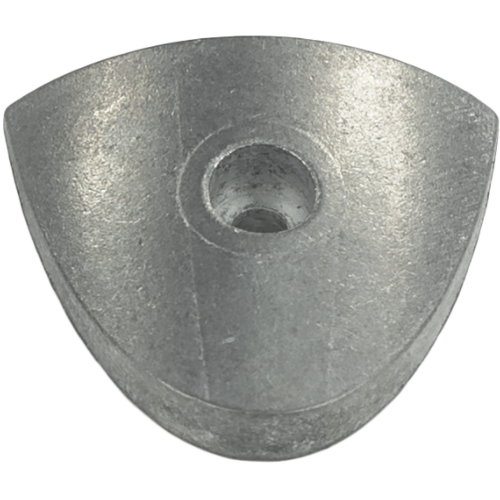Every boat has one or more anodes that must be changed regularly. This accessory protects metal parts such as the engine base, propeller, keel, daggerboard, hull, stern or spur gear against the harmful effects of corrosion. But how do you choose an anode?
What material should I choose for my anodes?
To choose the best anode, make sure that the material it is made of is suitable for the aquatic world. In addition, it must meet the mandatory purity standards. Indeed, the anode alloy must have a minimum purity of 99%. In addition, the iron content must not exceed 0.0014% to be more effective. If your boat’s hull is made of aluminium, magnesium (Hydral) anodes would be perfect.
What shape of anode should I choose?
There are many shapes of anodes to suit the metal parts of the boat to be protected. For a rudder, for example, a rose-shaped anode is usually chosen. For subbases and motors, washers, plates or carpets are often used.
Which anode model should be chosen for each environment?
You should choose anode materials according to the quality of the water you and your boat are sailing in. Regardless of the hull material of your boat (steel, aluminium or polyester), aluminium/zinc anodes are very effective. This option is perfect if you often sail in sea and brackish water.
If your vessel with a polyester or steel hull usually travels in clean fresh water, aluminium/magnesium anodes are the best choice. If your boat has an alloy hull, choose aluminium anodes. The same applies to movement in polluted fresh water.
Some tips for using anodes
Once you have chosen your anodes, there are a few things to remember.
- Never paint your anodes with antifouling,
- remember to maintain your anodes regularly. They should be brushed at anchor,
- Vessels with wooden hulls should not be fitted with magnesium anodes to avoid damage to the ribs.
Other information to remember
Anodes are designed to be damaged first to protect the metal parts of the boat. These accessories disintegrate over time. If your anode is not deteriorating, it is obviously not properly installed. However, if it degrades too quickly, a piece of equipment may be acting as an anode in its place or there may be some electrical leakage.
However, it is not easy to determine normal wear and tear, as it varies according to the type of boat and its environment. It is therefore a good idea to replace your anode at every refit if you notice any particular wear. You should know that an anode should be replaced if it has lost 75% of its mass. To ensure the repair or maintenance of your anodes, call on an expert.






